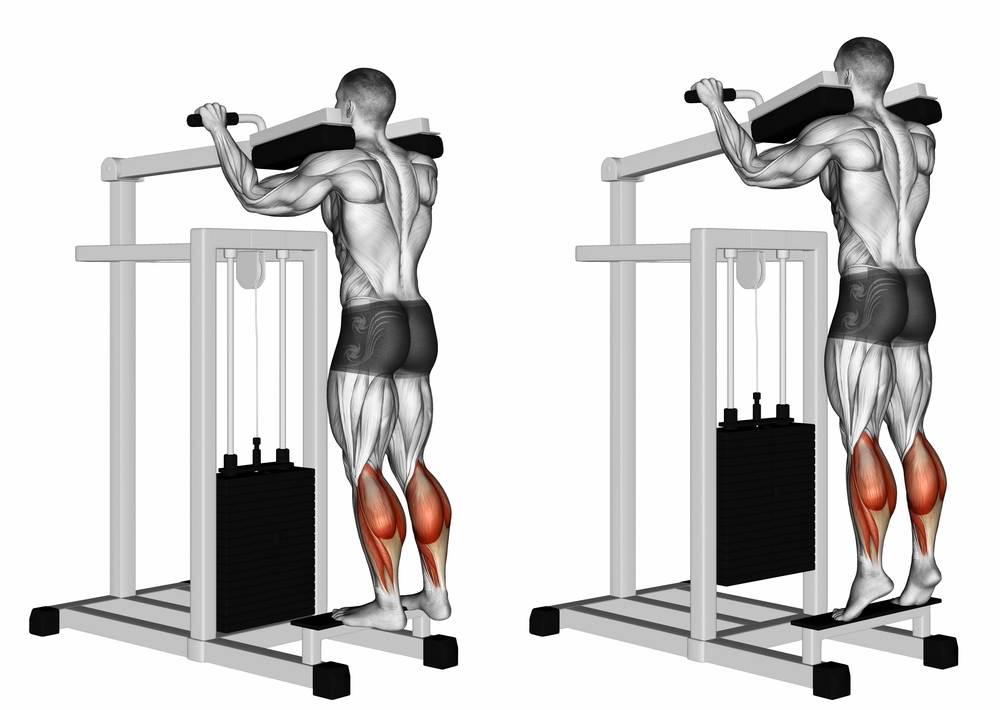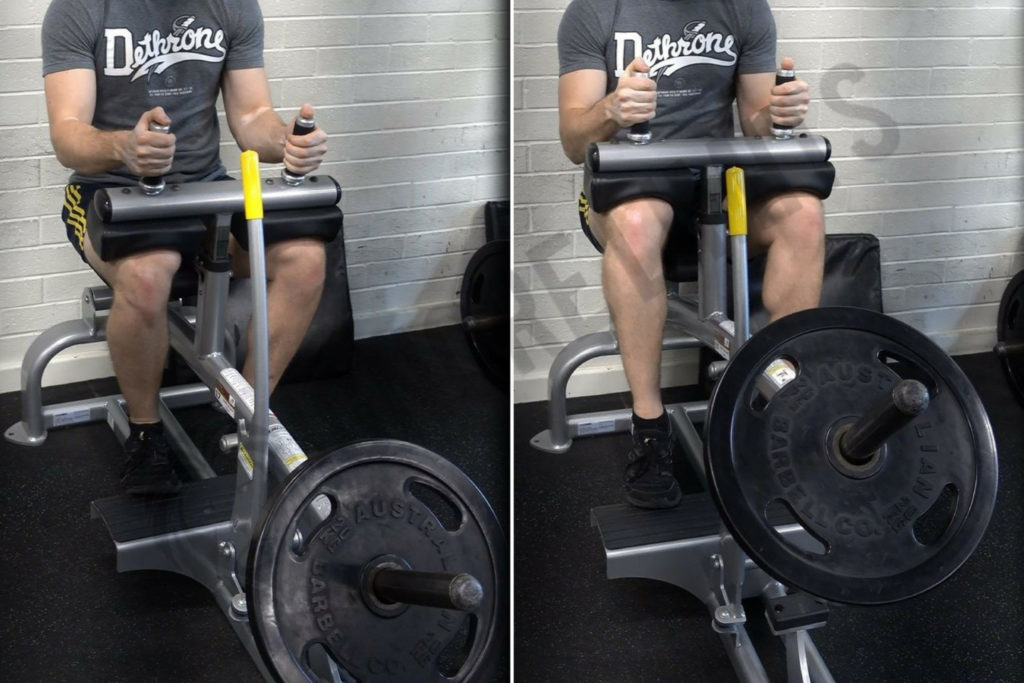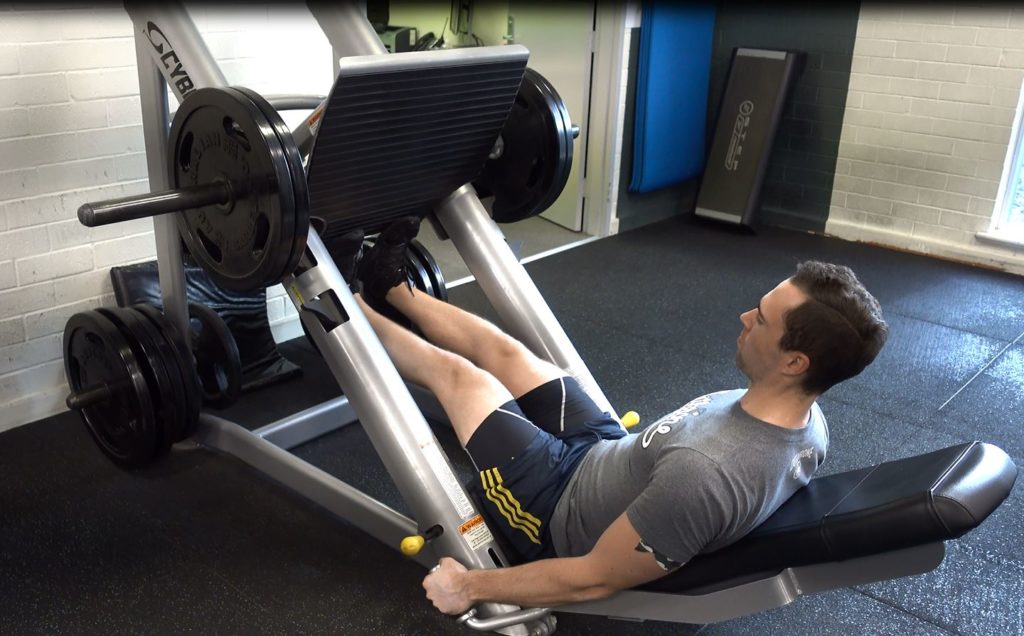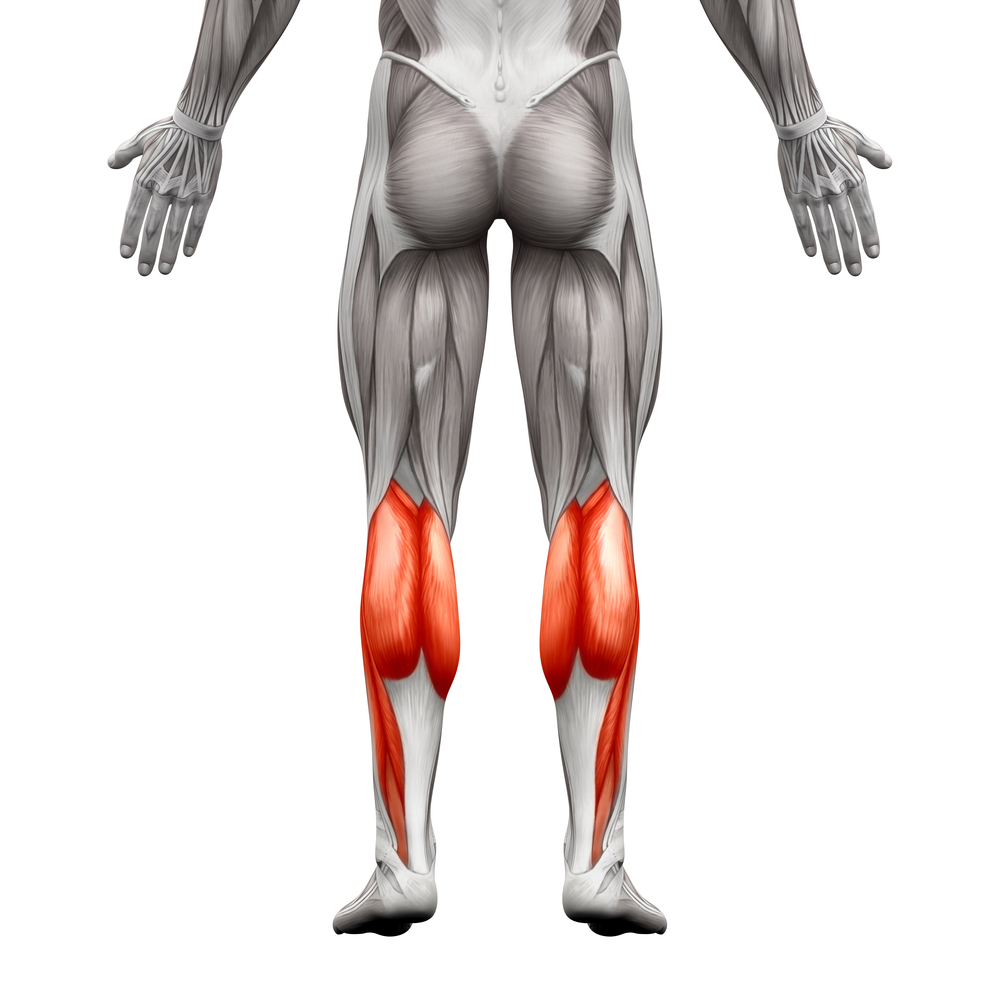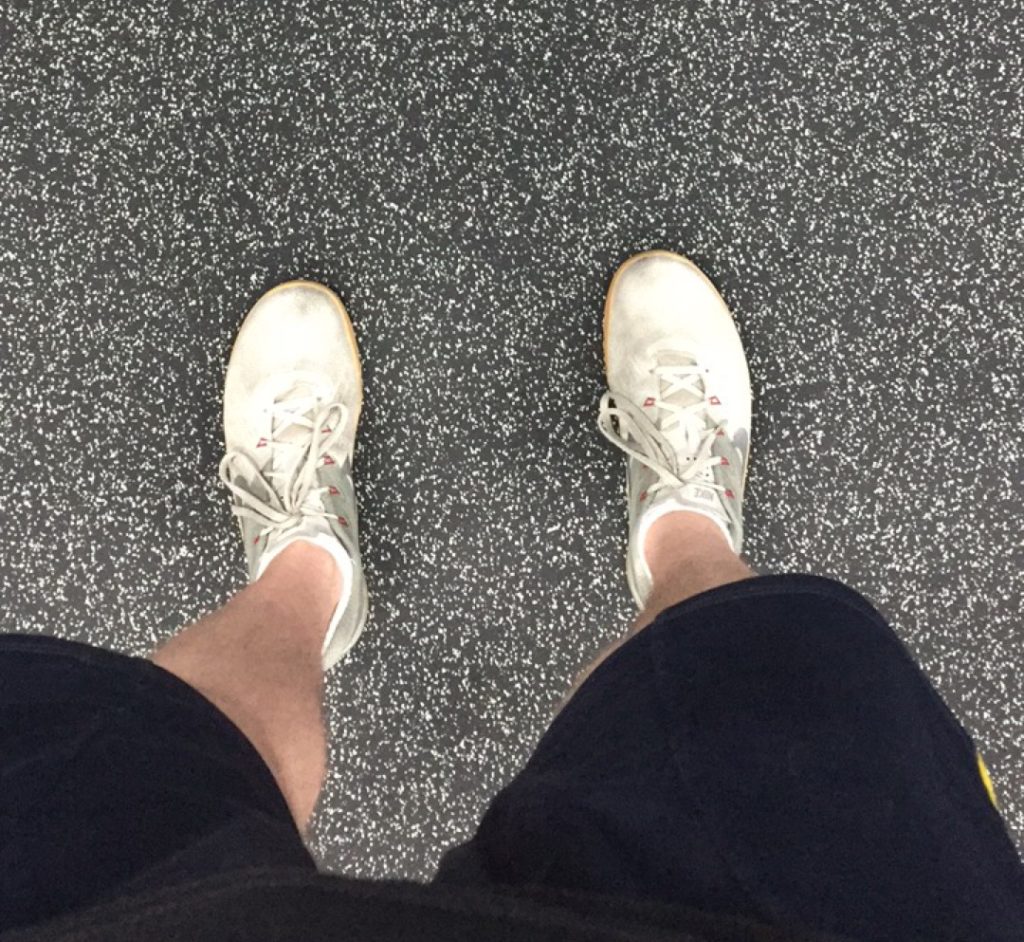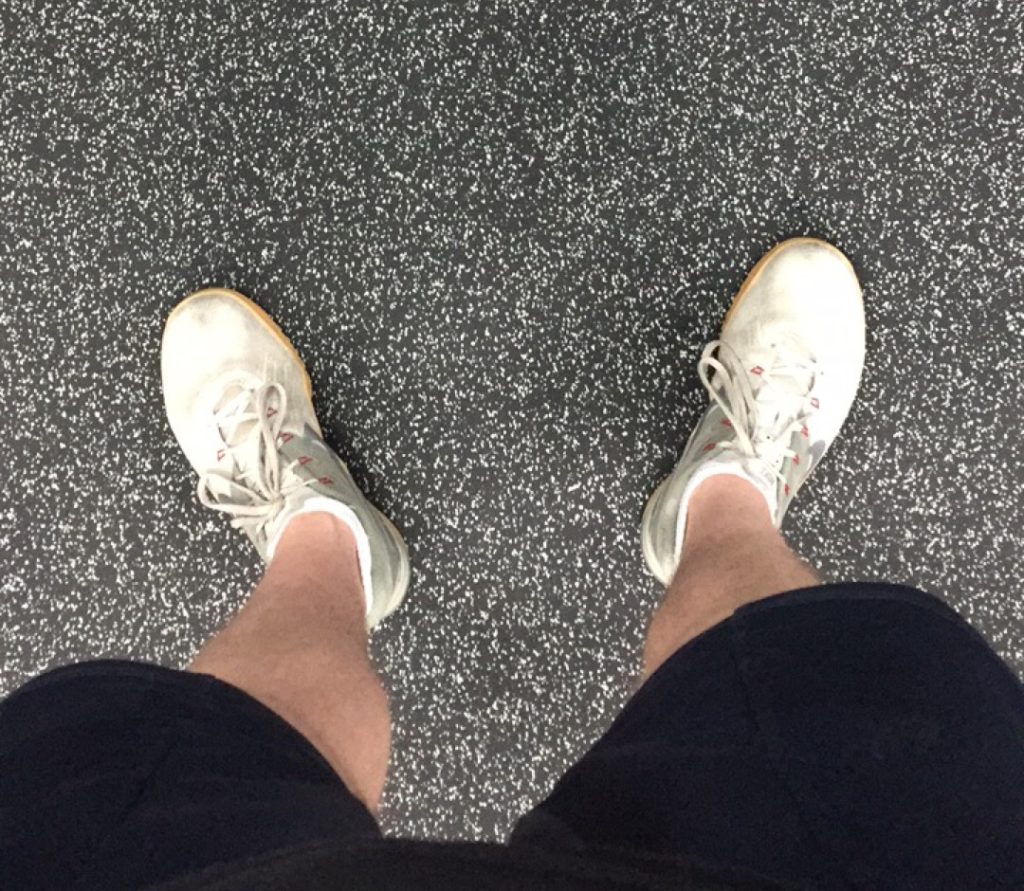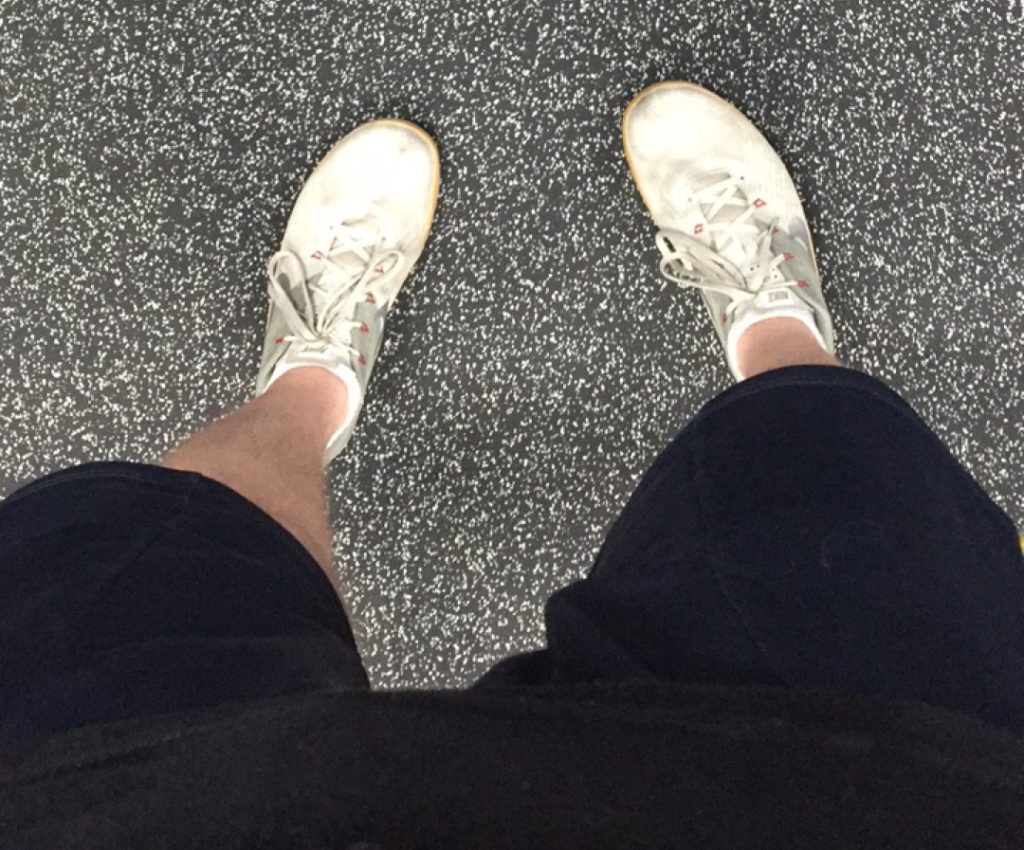Foot Position on Calf Raises Explained
The calf raise is a simple exercise to add both size and strength to the often neglected calf muscles, the vast majority of us have underdeveloped calves in relation to the rest of our physique (something I'm working on too!).
Some guys skip training calves all-together.
The majority of guys half-heartedly perform a few sets of standard calf raises after their leg workout...
If your calves are lagging behind and you want to add some serious mass to them it's key you understand the different foot position variations of the calf raise.
This foot placement applies to any and all variation of the calf raise including:
- Leg press calf raise
- Smith machine calf raise
- Seated calf raise machine
- Donkey calf raises
Before We Delve Into Foot Position on Calf Raises....
Here's a primer on the 2 variations I calf raise I recommend focusing on.
The Seated Calf Raise
Once seated on your calf raise machine with the pads adjusted correctly over your thighs begin to lift your heels up as high as you can by driving through the balls of your feet.
Pause for 1 second and flex your calf muscles at the top of the repetition.
Begin to lower your heels to return to the start of the repetition.
Repeat for the desired number of repetitions.
The Leg Press Calf Raise
Sit down on your leg press machine with legs fully extended touching the sled.
Press on the platform by pushing through the balls of your feet as your heels are raised off of the sled, your positioning should be at the very top of the leg press sled.
As you reach full extension flex your calfs for 1 second.
Lower your heels back down to return to the starting position to complete the repetition.
Repeat for the desired number of repetitions.
Understanding The Gastrocnemius
In order to hit our calves it's important you understand what we're actually hitting.
The gastrocnemius attaches just below your knee on the back of your leg, here's the often neglected and misunderstood point...
The gastrocnemius has 2 heads
The medial head of the gastrocnemius is the inner portion of your calves.
The lateral head of the gastrocnemius is the outer portion of your calves.
If the medial or lateral head of your gastrocnemius are lagging behind we can alter our foot position to target the desired head.
Building Overall Calf Strength 'N' Size
Here we see the foot position for a standard set of calf raises.
With feet forward you'll be targeting equal amounts of the medial and lateral heads.
As you're dividing the load evenly across the gastrocnemius you'll find that you're able to calf raise signfiicantly more weight when utilizing this standard foot placement as opposed to the variations below.
How To Target Inner Calves
In order to target the inner portion of the calves, aka. the medial head of your gastrocnemius we must point out toes outwards.
Position your toes out while calf raising on your seated calf raise machine, smith machine, leg press or donkey calf raise and you'll be placing the majority of tension on your inner calves.
How To Target Outer Calves
In order to target the outer portion of the calves, aka. the lateral head of your gastrocnemius we must point out toes inwards.
Position your toes in while calf raising on your seated calf raise machine, smith machine, leg press or donkey calf raise and you'll be placing the majority of tension on your outer calves.
The #1 Calf Raise Mistake
Not Contracting At The Top Of The Movement
In order to attain full benefit of the leg press calf raise you MUST pause for a second at the top of the movement and flex the calfs, do not opt to simply bounce the weight up and down without focusing on the time and quality of tension on the muscle.
Contracting at the top of the movement will not only increase activation, but you'll ensure you're not utilizing momentum for your repetitions.
